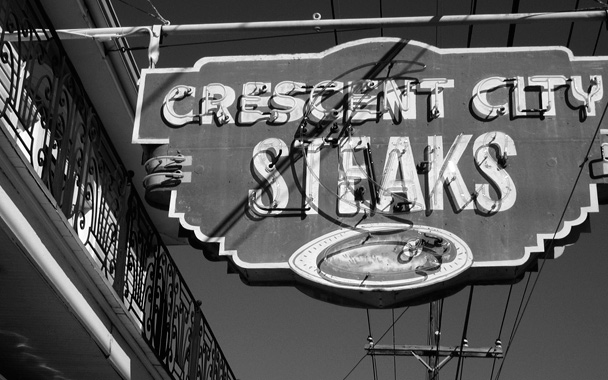Many out-of-towners consider Mardi Gras a long-weekend debauch—a three- or four-day high-octane rage with some recreational public nudity thrown in. College students come for a liver-damaging sprint fueled by caffeinated sports drinks and nearly flammable frozen cocktails. A bit of liquid amnesia is part of the package.
Locals have a different perspective, especially those who fully embrace Carnival. The season runs hard for a full three weeks before Fat Tuesday proper; it’s a marathon of weekend parades, funky marching bands, house parties, and backyard crawfish boils. Seemingly normal adults spend months considering various costume options.
And for most locals, it all winds down comparatively early and quietly on Tuesday night. For me, that means gathering with a ragtag group of friends each year for Mardi Gras steaks at Crescent City Steakhouse. It’s the last supper of the Carnival season, a chance to swap stories, one last night of family-friendly indulgence before the strictures of Lent and 40 days of deprivation. Writers Michael Tisserand and Tom Piazza—a journalist and novelist respectively—started this tradition a few years back. Book a big table at Crescent City, one of the city’s venerable steakhouses, and see who shows up. Have a few stiff whiskey drinks. Come hungry. Bring cash.
This year, our party spanned two banquet-sized tables and could easily have been mistaken for a wedding feast if not for the obvious vestiges of Carnival day. Some diners wore their favorite beads, caught during the three-week parade season. Some bellied up to the table in full costumed regalia. Most of us slumped in our seats, glad to be nearing the end of the Mardi Gras marathon.
In between bites of butter-soaked steak, the group relives the day with descriptions and digital photos of the glorious DIY St. Anne’s parade, where the serious maskers grab a Bloody Mary breakfast and roam the streets as satyrs and specters, harlequins and heroes. Special accolades go to the standout costumes—the guy dressed as Aretha Franklin’s inauguration hat, the impossibly statuesque drag queens in all their glory.
On this last climactic day of Carnival, locals fan out across the city, hoping to catch the cultural celebrations that the Bourbon Street tourist crowds never see. Some of us roam the downtown neighborhoods in search of Mardi Gras Indians—working-class craftsmen who practice African drumming traditions and intricate beadwork. Others take in the Zulu parade or the hip-hop show underneath the Claiborne Avenue overpass.
And at the culmination of the season, most of us—practicing, lapsed, and non-Catholics alike—have a very deep recognition of the need for Lenten respite. It’s a six-week opportunity to relax and detox: a finite break from rich foods and loud music.
After a few more drinks, the conversation at the steakhouse table gradually waned. The kids polished off their caramel-soaked ice cream pie. And slowly, the din from our 20-top faded to a rumble, then a sigh.
At the head of the children’s section, the youngest trooper, 9-year-old Walker Huston, finally gave in to exhaustion. Barely vertical for most of the meal, he rested his head on the tablecloth and slipped into a deep post-party slumber.
Every adult present knew the feeling. The month of parades and parties was over, and a long nap seemed like a perfect response. Get the check, over-tip the waiter for his patience, and head on home.
In an hour or so, the police would chase the out-of-towners off Bourbon Street with horses and hoses. But by then, we’d be home, drifting off to sleep with bellies full of beef, plans for next year hatching in our dreams.



 Pinterest
Pinterest


